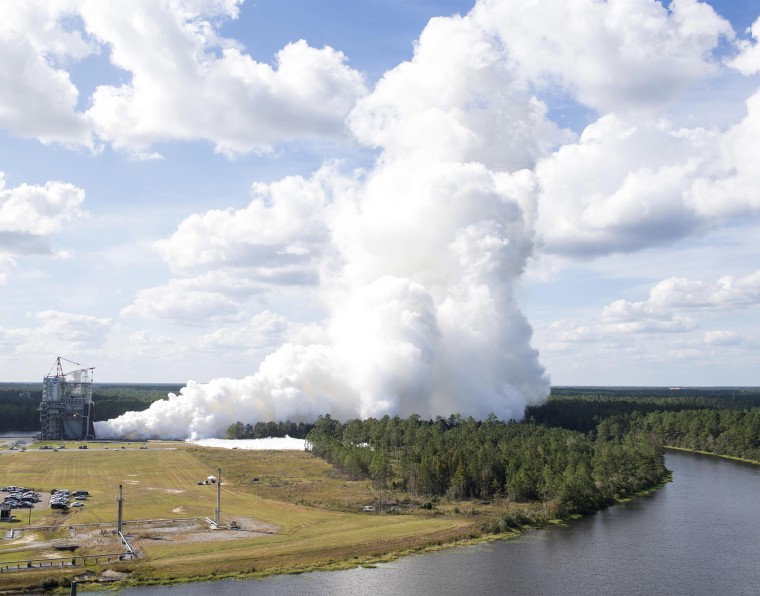Spectacular footage from a rocket engine test at NASA's Stennis Space Center in Mississippi shows a larger than life cloud of smoke pouring across a field as spectators look on.
The video shows the Oct. 19 test of a RS-25 engine that will power NASA's next-generation rocket, the Space Launch System (SLS). The rocket — the agency's most powerful rocket since the Saturn V that took astronauts to the moon in the 1960s — is designed to bring astronauts out of low Earth orbit to deep-space destinations, including the moon and possibly Mars.
The SLS will have four RS-25 engines on board each flight. This latest test will allow NASA engineers to proceed with flight certification for this engine type, according to a statement from the agency. [Space Launch System: NASA's Giant Rocket Explained (Infographic)]
This particular RS-25 engine — called Engine E2063 — will be used on the second test flight of the SLS (Exploration Mission 2), which is scheduled to take place no earlier than mid-2022 and will carry astronauts on the Orion spacecraft. The first, uncrewed test flight — Exploration Mission 1 — is likely in late 2019, although NASA has not confirmed that yet.
"The test was conducted in the same manner and for the same length of time that will be needed during an actual launch. The idea is to replicate as close as possible how the engine will be used on a mission," NASA officials said in the statement.
"Thus, the test countdown to ignition is largely the same as during a launch; the way the engine is fired and throttled is the same and the length of time it is fired is the same," according to the statement. "The only difference between how the engine fires during a test and during a launch is that one remains anchored in place on a test stand while the other actually leaves the ground."
The test was also viewed by members of the public who attended a Stennis Space Center open-house event. The onlookers watched the proceedings from about half a mile away.
"It is loud enough to [justify wearing] ear plugs, close enough to feel the vibrations of its power," according to the statement. "If the wind blows right, the pure water exhaust from the engine can even condense and rain down on the crowd."
Stennis is a noted site for NASA rocket engine testing. Some of its past projects included testing all of the Saturn V engines and stages used for human moon landings in the 1960s and early 1970s; testing the space shuttle main engine between 1975 and 2009; and now testing all of the RS-25 engines and stages for SLS.

